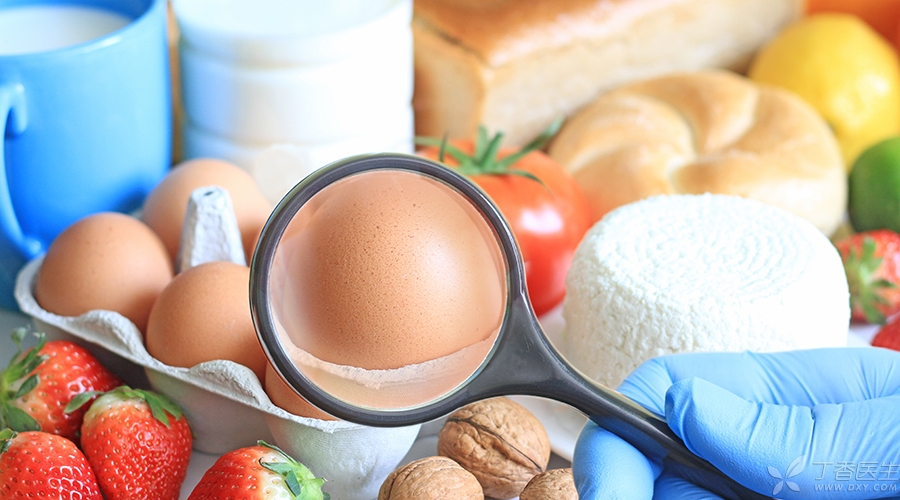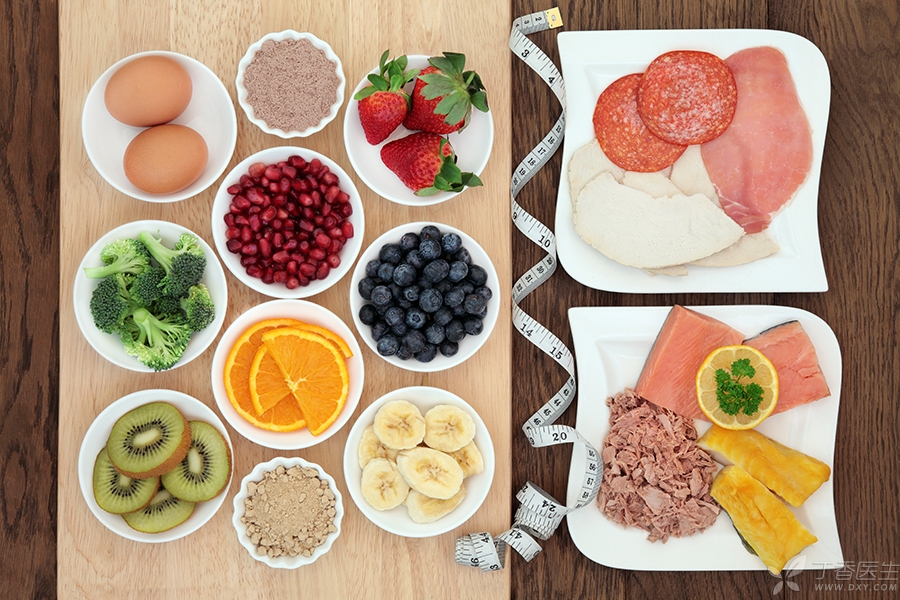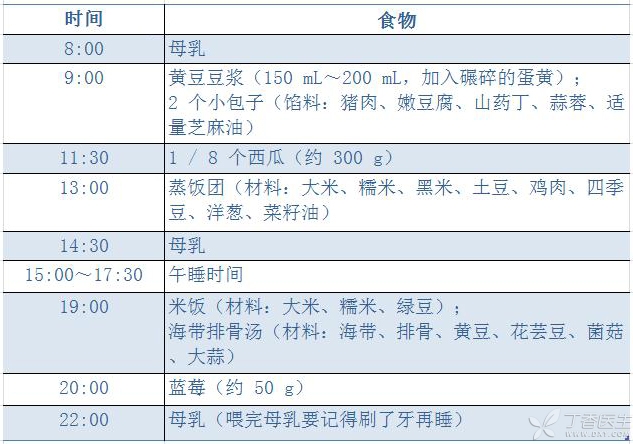
The baby’s allergy to food is a very headache for many parents, especially when preparing food for the baby, they are not only worried about causing the baby’s allergy accidentally, but also worried that avoiding allergic food for a long time will cause the baby’s malnutrition, which is really nerve-racking.
Ding Ma invited a nutritionist with allergic babies to tell parents how to ensure nutrition for babies with food allergy.
My little fellow is allergic to a variety of foods. At present, we know: nuts such as egg white, milk, peanuts and walnuts, aquatic products such as fish, shrimp, crab and shellfish, and tropical fruits such as longan and mango.
However, the little fellow is now 20 months old, with full growth and development reaching the standard and good immunity. Among them, in addition to good daily care, balanced and reasonable dietary nutrition also has a lot of credit.
However, the baby is allergic to food, which cannot be eaten, nor can it be eaten. How can we ensure balanced and reasonable dietary nutrition intake?
To solve this problem, we must first start with the principle of allergy.
Allergy is actually an abnormal enhancement of immunity.
Under normal circumstances, our body’s immune system will only attack harmful substances such as bacteria and viruses, and will not react to natural harmless substances from outside. However, when our immune system is abnormally strengthened, it will overreact to these originally harmless substances, which leads to allergy.
Therefore, the occurrence of allergy is not a poor immunity, but a manifestation of abnormal immune enhancement.
The cause of allergy in infants has not been determined in medicine at present. It can only be said that the immune function is still immature.
Most babies, with the maturity of immune function, allergy will gradually improve, but there are also some babies allergy will accompany life.
Although it is beyond people’s control whether allergy can improve, parents still need to do a good job in nursing allergic babies.

First of all, allergens must be strictly avoided.
If it has been confirmed that the baby is allergic to a certain food and will have allergic reactions (such as rash, vomiting, diarrhea, abdominal pain, hematochezia, respiratory symptoms, etc.) after eating a certain food, then it is necessary to strictly avoid this food and try again after at least 3 to 6 months.
If you try to be allergic after 3 to 6 months, you need to wait another 3 to 6 months.
If the baby has had serious allergic reactions to certain foods, such as dyspnea and shock, then he must consult a doctor before trying this food again.
In particular, strictly avoiding allergens means that you cannot touch any of them!
To give an example:
Babies with milk allergy, whether it is candy or biscuits containing milk ingredients, should avoid it. In addition, any moisturizer containing milk should not be used by babies.
If you are allergic to nuts, then those moisturizers that claim to contain so-and-so nut oil should not be used by your baby.
If you are allergic to fish and shrimp, do not eat DHA and cod liver oil from animals.
Therefore, parents must read the labels clearly when buying food and moisturizer for their babies. What about what information?
First of all, we should look at the ingredient list and allergen information of the product. If it contains ingredients that the baby is allergic to, do not buy it.
Then we need to pay attention to the information of the product production line. Now many big brands and regular manufacturers will mark such information on the product packaging [this production line also produces products containing XX, XX, XX, XX]. Parents must not skip this one.
If the baby is allergic to milk, although a certain food does not contain any milk ingredients, it is marked on the package that other foods produced on the same production line contain milk ingredients, which may be mixed with milk ingredients during production. To be on the safe side, such foods are not recommended for the baby to eat.
Attention should also be paid when making supplementary foods at home. For example, for babies with egg allergy, the pot that has just boiled eggs must be strictly cleaned before cooking supplementary foods for babies.
Many people, especially the middle-aged and the elderly, do not understand the principle of allergy. They think that eating too much is not enough. It is OK to eat less. Some even think that allergy is eating too little and trying more is good. These are completely wrong understandings.
During the period of strictly avoiding allergens, stimulating the immune system over and over again will not make the immune system accept it because it is familiar with it, but will strengthen the allergic reaction of the immune system.
How Guarantees Nutrition for Allergic Babies
An important method is to use the principle of similar exchange to find alternative food.
First of all, it is necessary to analyze which nutrients are contained in the food that the baby is allergic to, and then select the food that can perfectly replace it with other nutrients.
Take my little fellow for example (I think few people can exceed the number of allergies). His allergic foods are egg white, milk, nuts, fish and shrimp, and some tropical fruits.
Can’t tropical fruits be eaten?
There are other fruits to eat, and there are really too many fruits to replace them.
Apples, watermelons, peaches, blueberries, kiwifruits and so on are given to the baby instead. One or two kinds of fruits are enough every day.
Can’t you eat egg white?
But the yolk can be eaten, and 70% of the nutrients in the egg are in the yolk. Therefore, one yolk per day must be guaranteed.
Egg allergy baby must distinguish whether egg white allergy or the whole egg allergy. The vast majority of egg allergy is egg white allergy, don’t give up egg yolk at this time.
Egg yolk is rich in lecithin and lutein, which plays an important role in infant brain development. It is also rich in minerals such as calcium, phosphorus, zinc and selenium, as well as vitamins A, D, E, K and all B vitamins.
Can’t you eat milk?
However, breast milk and soybean can be eaten. Breast milk can continue to be given during breast milk. Soymilk can be used instead of dairy products such as milk for added foods.
What should I do after weaning? In addition to ensuring his intake of other foods, he can add deeply hydrolyzed protein formula milk powder or amino acid milk powder. The specific one can depend on which one the baby can accept until he can accept ordinary milk.
Can’t nuts, fish and shrimp be eaten?
Chickens, ducks, pigs, beef, mutton, beans and bean products are also rich in protein, vitamins, minerals and fatty acids, which can be made for babies instead.
Ensure to eat at least two or more different kinds of meat every day, and at least two meals contain beans and bean products (except soybeans, other peas, green beans, cowpeas, broad beans, etc. can be eaten by babies when they are fresh on the market).
Fried or steamed vegetables and meat with vegetable oils (soybean oil and rapeseed oil) rich in unsaturated fatty acids to make up for the shortage of unsaturated fatty acids.
Often use kelp stew broth, stew meat eat kelp, supplement protein and iodine, calcium can also supplement DHA.
Although laver is also rich in minerals and DHA, laver may be mixed with small fish and shrimps due to processing methods, and is not recommended for babies with allergy to fish and shrimps.

How does the dietary balance constitute
Let’s take the meal I arranged for the little fellow as an example. For 20 months, the energy demand of the little fellow is about 1000 ~ 1100 kcal/d, while the energy demand of the adult is about 2000 kcal/d, which is basically half of the energy of the adult.
The little guy’s stomach is so big, in order to ensure sufficient supply of nutrition and energy, we should try our best to choose foods with high nutrient density and high energy density, and eat less and eat more.
What are the foods with high nutrient density?
Is that the content of one or more nutrients greatly exceeds that of other similar foods.
For example:
Soybean and its products belong to high-quality protein and are rich in calcium, phosphorus, potassium, various minerals and vitamins.
Meat is a high-quality protein and is rich in minerals and fat-soluble vitamins.
Kelp is rich in iodine, calcium and other minerals that other foods cannot match.
Carrots are rich in-carotene, which can supplement vitamin A deficiency.
What are the foods with high energy density?
Of course, it refers to those foods that can provide high energy. Rice and noodles provide enough carbohydrates and can supply enough energy. Therefore, the supply of staple food cannot be less.
Dietary Guidelines for Chinese Residents (2016) suggest that carbohydrates provide about 50% of the daily energy supply for children aged 1-3. Fat supplies 35% of the energy and protein supplies 15% of the energy, so meat, eggs, milk and beans cannot be less.
Because infants have limited stomach capacity, they should eat less and eat more. And the daily intake ratio of vegetables and fruits should not be too high.
The dietary ratio I arranged for the little fellow was: the volume ratio of cereal potato: vegetable mushroom: meat and beans ≈ 3: 3: 2.
Adults need to consume much more vegetables than this, but infants’ stomach capacity is limited and the proportion of vegetables is too high, which will lead to insufficient energy intake and affect children’s growth and development.
Although fruits are used as extra meals, except for fruits with high water content such as watermelons, the intake can be slightly relaxed each time, and the intake of other fruits should not exceed 100g each time, otherwise it may affect the eating of the main meal.
The following is an analysis of how to achieve a balanced diet based on the diet records of our little family yesterday.

He eats a total of 21 kinds of food a day. Generally speaking, the more kinds of food, the more comprehensive the nutrition.
Of course, there is no need to require so many kinds of food to be consumed every day. The Dietary Guidelines for Chinese Residents (2016) recommend 12 or more kinds of food to be consumed every day.
The staple food is one meal of pasta and two meals of rice. Miscellaneous beans and potatoes are added to it. Meat is two meals of pork and one meal of chicken. Vegetables include bacteria and algae in addition to vegetables. All kinds of foods are involved.
Therefore, as long as you master the method and have a little more patience, allergic babies can still eat delicious food and be in good health.
Have you learned to have allergic babies at home?
